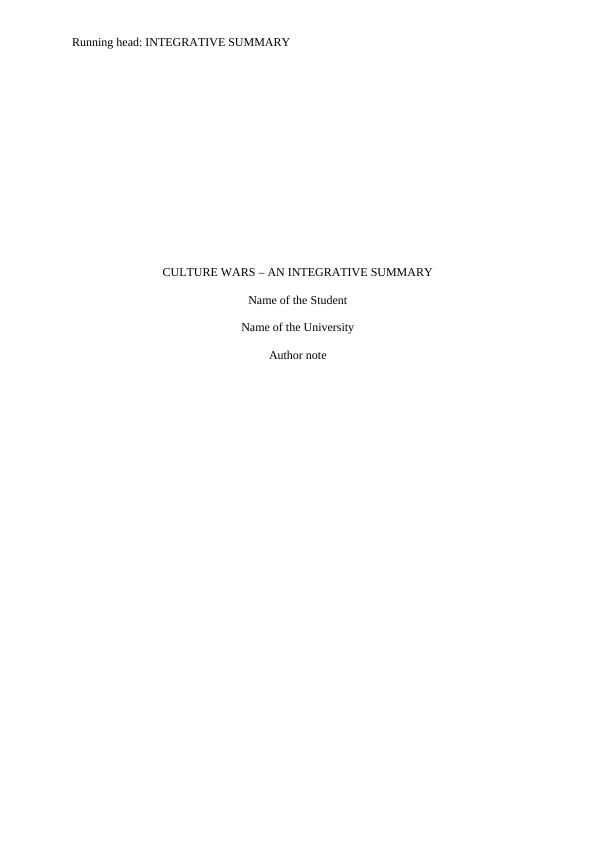Culture Wars – An Integrative Summary
Focus on one or two themes discussed in the week’s reading, go beyond summary into thoughtful analysis, reflect on the significance of the topics or themes discussed in the readings, synthesize material from multiple sources, avoid certain words, written in good academic style, include full citations of sources.
6 Pages919 Words363 Views
Added on 2022-10-19
About This Document
Read an integrative summary on Culture Wars and conflicts related to culture. Learn about the societal relations and theories attributed to culture wars.
Culture Wars – An Integrative Summary
Focus on one or two themes discussed in the week’s reading, go beyond summary into thoughtful analysis, reflect on the significance of the topics or themes discussed in the readings, synthesize material from multiple sources, avoid certain words, written in good academic style, include full citations of sources.
Added on 2022-10-19
ShareRelated Documents
End of preview
Want to access all the pages? Upload your documents or become a member.
How liberalism challenges societal structures - Integrative Summary Paper
|5
|854
|285
Making Sense of Society Report
|8
|2567
|39



